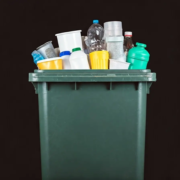How Does a Debris Removal Service Handle Hazardous Materials?
Handling hazardous materials is a serious task that requires specialized knowledge and protocols. In this FAQ blog, we will explore the steps debris removal services take to manage hazardous materials safely and effectively. By understanding these processes, you can appreciate the importance of hiring professionals for such critical tasks.

What Are Hazardous Materials?
Hazardous materials include substances that pose a risk to health, property, or the environment. Examples include chemicals, batteries, asbestos, and medical waste.
These materials can be highly dangerous if not handled properly. For instance, improper disposal of chemicals can lead to severe environmental contamination, while handling asbestos without the right protections can cause serious respiratory issues.
Common settings where hazardous materials are found include industrial sites, hospitals, and even residential properties undergoing renovation. Proper identification and management are crucial to prevent any harmful exposure.
Why Is Proper Handling Important?
Improper handling of hazardous materials can lead to serious health risks, environmental damage, and legal consequences. Professional debris removal services are trained to manage these risks.
For example, mishandling of hazardous waste such as batteries can lead to leaks that contaminate surrounding soil and water, posing a threat to wildlife and human health.
Proper handling also ensures compliance with local and national regulations, helping to avoid hefty fines and potential shutdowns of operations.
Initial Assessment and Identification
Debris removal services start with a thorough assessment to identify any hazardous materials. This step involves visual inspections and sometimes testing to determine the type and extent of the hazards present.
In some cases, specialized equipment might be used to accurately assess the hazards. For instance, devices that detect chemical vapors can help in identifying hidden dangers that aren’t visible to the naked eye.
After identifying the hazardous materials, a detailed plan is developed outlining the safety measures and equipment needed to handle and remove the risks effectively.
Safety Protocols and Equipment
To handle hazardous materials safely, removal services follow strict safety protocols. They use specialized equipment like protective gear, containment systems, and proper disposal methods to minimize risks.
Technicians wear personal protective equipment (PPE) such as gloves, masks, and protective suits to provide a barrier against harmful substances.
Furthermore, specialized tools like HEPA-filter vacuums and encapsulating sprays are employed to ensure that contaminants are effectively contained and removed without causing additional exposure.
Segregation and Containment
Hazardous materials are segregated from non-hazardous debris to prevent cross-contamination. Containment involves using appropriate containers and barriers to safely store the hazardous materials until they can be disposed of or treated.
Containers used are often specially labeled and color-coded to help workers easily identify the type of hazard they are dealing with, ensuring no mix-ups during transportation or disposal.
Effective segregation can also involve setting up physical barriers and using sealed containers to prevent any leaks or spills during the removal process.
Transportation and Disposal
Once contained, hazardous materials are transported to specialized facilities for disposal or treatment. Professional debris removal services ensure that transportation is conducted according to legal and safety regulations.
Vehicles used for transporting hazardous materials are equipped with safety features such as spill containment systems and are often tracked to ensure they reach their destination without incident.
Facilities receiving the hazardous waste are specially designed to treat or dispose of the materials in ways that neutralize their harmful effects, such as incineration or chemical processing.
Adherence to Regulations
Debris removal services must adhere to local, state, and federal regulations when handling hazardous materials. Compliance ensures that the materials are handled in a way that protects public health and the environment.
Strict regulation adherence not only safeguards health and environment but also maintains the reputation and credibility of these services, making them more reliable and trusted by clients.
Regular training and certification updates for team members help debris removal services stay current with regulations and best practices, ensuring continuous compliance and effectiveness in handling hazardous waste.
Final Thoughts
In conclusion, debris removal services play an essential role in managing hazardous materials safely. By following stringent protocols and using specialized equipment, they ensure the safety of the public and the environment. Hiring a professional service is crucial for dealing with hazardous waste, as this ensures compliance with regulations and minimizes risks.











